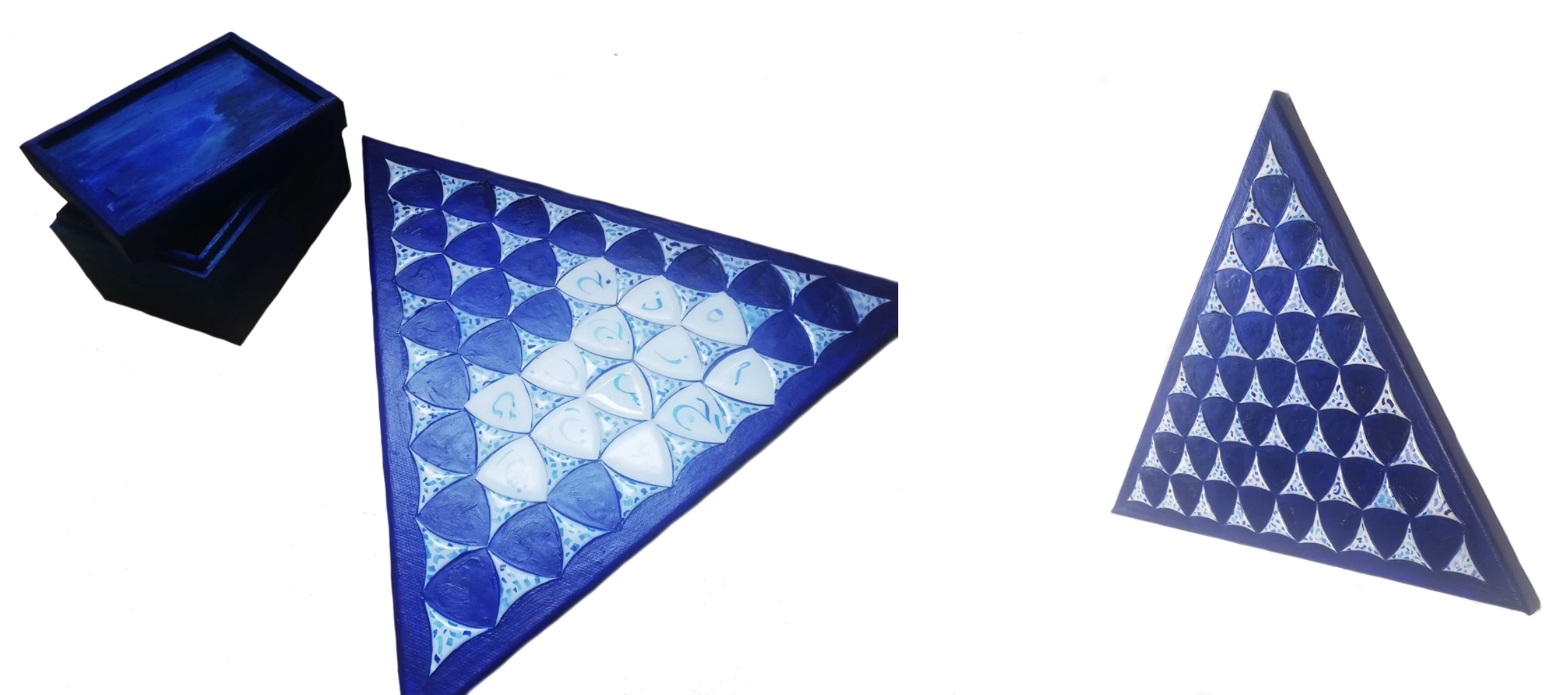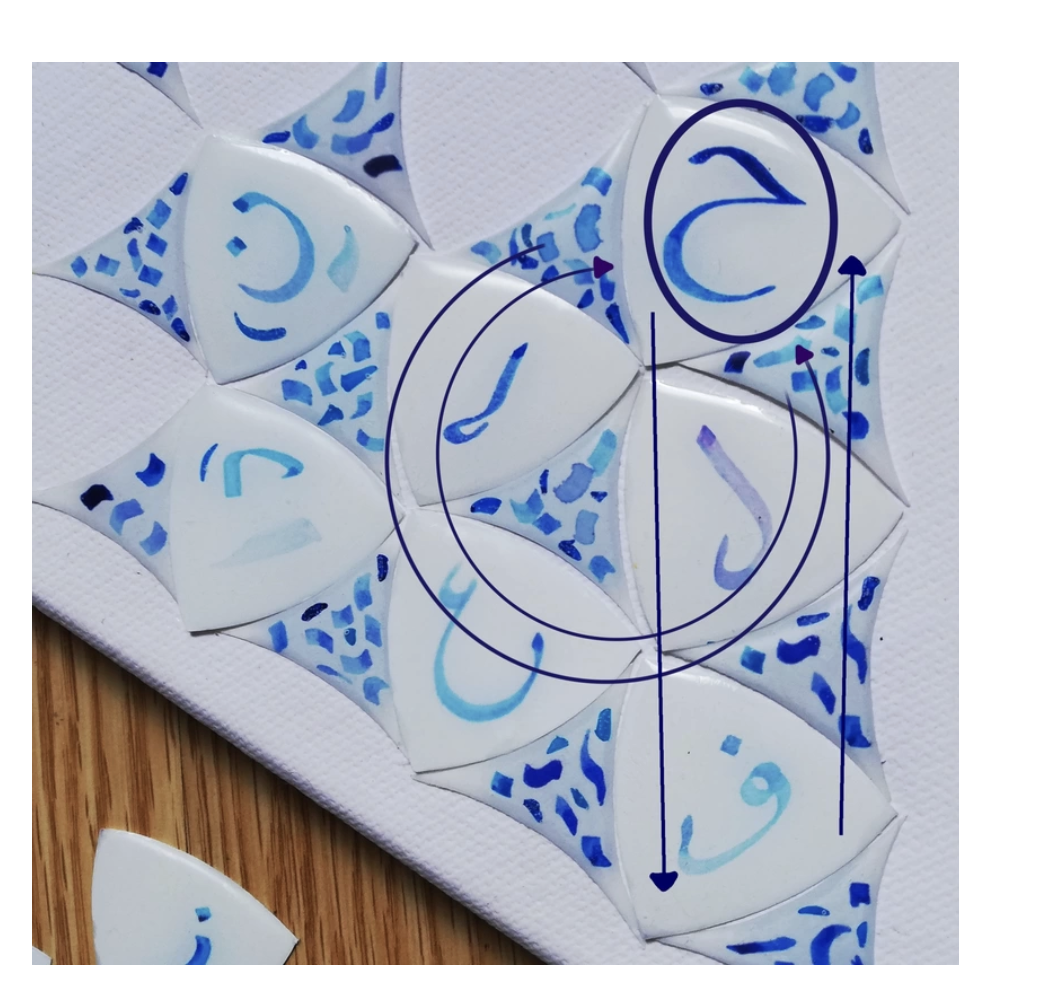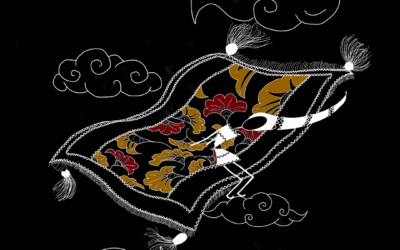الثُّلُث – Thuluth: Geometric Scrabble with Arabic Word Roots
الثُّلُث – Thuluth
Thuluth is an innovative, mosaic-inspired board game designed to enrich Arabic vocabulary and engage learners with the structural beauty of the Arabic language. The name Thuluth (الثلث), referring to the common three-letter root system in Arabic and to a classical cursive calligraphic style, reflects the game’s dual foundation in language and art. The game combines visual creativity, logic, and linguistic exploration and is suitable for players of all proficiency levels—from absolute beginners to native speakers. The game is played by filling a triangular board with Arabic letters, creating meaningful three-letter roots in every triangular cluster. Players earn points for each valid root, encouraging quick thinking, word analysis, and playful competition.
45–90 minutes (or above, if the game is created together with the learners)
10 years and up
6 players
Vocabulary acquisition, Build and reinforce vocabulary, especially verbs, spelling, root analysis, dictionary usage, Explore Arabic root patterns and morphological logic
Strategic thinking, Cooperative learning, Foster awareness of Arabic calligraphy and geometric design, Develop cultural appreciation through language-art integration
Suitable for all levels—from A1 to native speakers
- For Ready-to-Use Play, prepared in advance or DIY version made by the learners:
- A Thuluth board (triangular with 36 central slots)
- 2 letter tiles per Arabic letter (can be handwritten or printed),
- Scoring sheet or notebook, Arabic dictionary (monolingual or bilingual),
- Timer (optional)
- For the game:
- ruler and compass or design software (e.g., Amaziograph),
- Construction paper or cardsto, Scissors or cutting knife,
- Glue or resin (optional, for permanent boards),
- Markers for calligraphy decoration,
- Cardboard, canvas or recycled wooden base (for durable versions)

Languages Available
Online or in-person using a screen or projector
1. Design the Game Board
- Draw a large equilateral triangle on your chosen base (cardboard, canvas, etc.).
- Divide the triangle into 9 parallel strips per side, creating a grid of 81 smaller triangles inside (36 letter tiles and 45 intersection tiles).
- You can do this manually with a compass and ruler.
- Or use a digital tool like Amaziograph, which can generate a repeating triangular pattern for you.
2. Create the Letter Tiles
- On separate cardstock, write the letters of the Arabic alphabet. You’ll need at least two tiles per letter, but more are encouraged for flexibility.
- Decorate the tiles if desired (e.g., calligraphy style, geometric borders).
- Cut out the tiles using scissors or a cutting knife.
3. Create the Intersection Tiles
- These are the spaces between the letter tiles that form the triangular connections.
- You can decorate these with geometric or calligraphic designs to enhance the visual appeal of the board.
4. Resin Coating (optional)
- To make the tiles more durable and aesthetically appealing, coat them with resin epoxy.
- Let dry for 24 hours. This gives a shiny, solid finish and makes the game easier to handle.
5. Assemble the Board
- Once your tiles are decorated and dry, glue the intersection tiles in place on the board, forming the triangular structure.
- Leave the letter tile spaces blank, so players can place and move the letter tiles during gameplay.
- Double-check the alignment to ensure the triangles are uniform and the game is playable.
Alternative Quick Version:
If you don’t have materials for a full build:
-
- Use a large sheet of paper and pencil.
- Draw the triangle and grid as described.
Write letters directly into the spaces instead of using physical tiles.This version is great for quick games or classroom use.
Tips for Customization:
- Let learners design and decorate their own tiles.
- Use colors to code different letter types (e.g., strong vs. weak radicals).
- Add point values or symbols to certain tiles for game variation
- Use the following “Book of ornaments” or any other resources with ornametal patterns coming from different cultures to inspire you learners and make them learn about geimetric design and the art of the ornanaments.
6. Play the game !
For game rules, please download the pdf version of the activity description.

For Educators, Teachers and Parents
Recommendations for teachers
Before the Workshop:
- Prepare materials in advance: print or create triangle game boards, laminate if possible; prepare letter tiles (cardboard, paper, or wood); ensure a dictionary is available (print or digital).
- Optionally create a vocabulary reference sheet with common 3-letter roots.
- For younger or beginner students, consider pre-selecting a few starter roots for practice.
During the Workshop:
-
- Create the game board together: allow students to help construct the board (drawing triangles with a compass or ruler), decorate tiles, and personalize them. This increases ownership and engagement.
- Demonstrate one full round of the game on the board before starting.
- Pair or group students by proficiency to encourage peer learning.
- Use game variants (e.g., Poker-style or 2-player swap) to suit different group sizes and goals.
- Encourage oral use of new roots: ask students to say the root aloud, give an example word, or translate into the heritage/majority language.
Recommendations for parents
Encourage Vocabulary Building
- Help your child keep a small notebook to write down new roots or words they discover while playing.
- Ask them to explain or translate each root after their turn to reinforce learning.
Use the Dictionary Together
- Look up roots with your child to explore how words are formed.
- Show them how a single root leads to multiple meanings and forms.
Balance Learning and Fun
- Remind them it’s okay not to know every word.
- Praise creative attempts and curiosity—even when they make mistakes.
Create a Quiet, Comfortable Game Space
- Set up a calm area with good lighting and space for the board.
- Make it inviting by including colored pens, stickers, or decorations for personalized tiles.
Set Time Limits
- To keep the game engaging, use a timer (e.g., 3 minutes per turn) to maintain focus and pace.
Involve Kids in Crafting the Game
- Let your child help decorate the tiles and design the layout.
- It adds ownership and excitement about the game.
Integrate Art and Language
-
- Encourage your child to write beautifully or decorate roots with calligraphy-style lettering.
- This connects the artistic heritage of Arabic with language learning.
Adaptation/Application of the method
Adaptations for other languages
Adapting Thuluth to other languages can be both fun and pedagogically valuable! Here are practical tips and strategiesfor adapting the game’s structure and logic to different languages while preserving its educational goals and visual appeal:
1. Understand the Linguistic Logic of the Target Language
- Arabic: Built on triliteral roots → ideal for triangle-based logic.
- Romance & Germanic languages (e.g., French, Spanish, English): Use prefix-root-suffix structures or compound word logic.
- Turkish / Finnish / Hungarian: Use agglutinative structures – start with a root and add suffixes logically.
- Chinese / Japanese: Use radicals or syllables as building blocks (e.g., in Chinese, combine two radicals to form a meaningful character).
2. Redesign the Gameplay Grid
- Instead of 3-letter triangle roots, you can:
- Use a hexagonal grid to form compound words or phrases.
- Use squares or strips for building words with prefixes and suffixes.
- Keep the triangle format but focus on syllables, word stems, or letter clusters that build meaning.
3. Adjust the Rules for Word Formation (example: English, French, German)
For English:
- Form valid 3-letter base words (e.g., “run”, “fit”, “dig”).
- Use tiles to add prefixes/suffixes: “re-run”, “fitting”, “digging”.
- One triangle = 1 root word + optional transformations.
For French:
- Base on verb conjugations: create groups like “mange”, “manger”, “mangera”.
Include gendered forms: “beau”, “belle”, “beaux”.
For German:
- Use compound word parts: “Haus”, “Arzt”, “Hausarzt” (house + doctor).
- Allow word splitting across multiple triangles.
4. Keep the Artistic and Cultural Element
- Encourage learners to decorate the game using motifs relevant to the language’s culture: (ex. Celtic knots for Irish, ink brush strokes for Chinese, Art Nouveau script for French)
5. Educational Goals Should Stay Central – Always design the rules around:
-
- Vocabulary expansion
- Word formation logic
- Grammar awareness
- Storytelling or translation challenges
6. Example Adaptation: French “Triluth”
-
- Board: triangle grid
- Each triangle = 3 connected syllables or word roots
- Valid combos: “pré” + “par” + “er” → “préparer”
- Points:
- 1 point per real word formed
- Bonus if it’s a verb, adjective, or a compound form
- Use of rare forms (subjunctive, passé simple) gives bonus points!
Challanges
General Guidelines:
- Identify learners’ language level (A1 to C2) and adapt the game rules accordingly, based on the PDF version.
- Prepare your materials:Use the online version for group work on a screen. Use the printed version for more tactile, interactive work.
- Plan an introduction to the vocabulary or expressions featured on the cards to support comprehension.
Pedagogical Tips:
- Start as a group: Explore the expressions or vocabulary together and ensure everyone understands them.
- Encourage speaking: Each player should explain their choices, ask questions, and describe images. This helps develop oral fluency and active language use.
- Emphasize reformulation and detailed description (especially from level B1 onward) to strengthen expressive skills.
- Use the game variations to diversify learning:
- Storytelling with cards
- Memory games or syntax-based activities
- Image-to-sound or image-to-situation associations
Tip: Link to Visual Art
Take advantage of the artistic references on the cards (“In the universe of…”) to introduce a cultural dimension. You can:
- Assign mini-research projects on the artists
- Show the original artworks in class
- Discuss their style, origin, or message
References and Resources
Find out more about board games to learn Arabic through art : https://apprentissagecreatifdelarabe.weebly.com/les-objets.html
Similar Activities
Kufic Script Inspired Mosaic
Through this workshop, participants simultaneously engage their language skills (recognition, writing, pronunciation) and their artistic sense, while immersing themselves in the geometric and historical heritage of Kufic script.
The Intruder – Card Game
The Intruder is a versatile and interactive multilingual card game designed to enhance language learning across multiple levels (A1-C2) while fostering creativity, imagination, and cultural awareness. Perfect for classrooms or family gatherings, this game offers both online and printed versions, allowing players to explore language in a fun, dynamic way.

